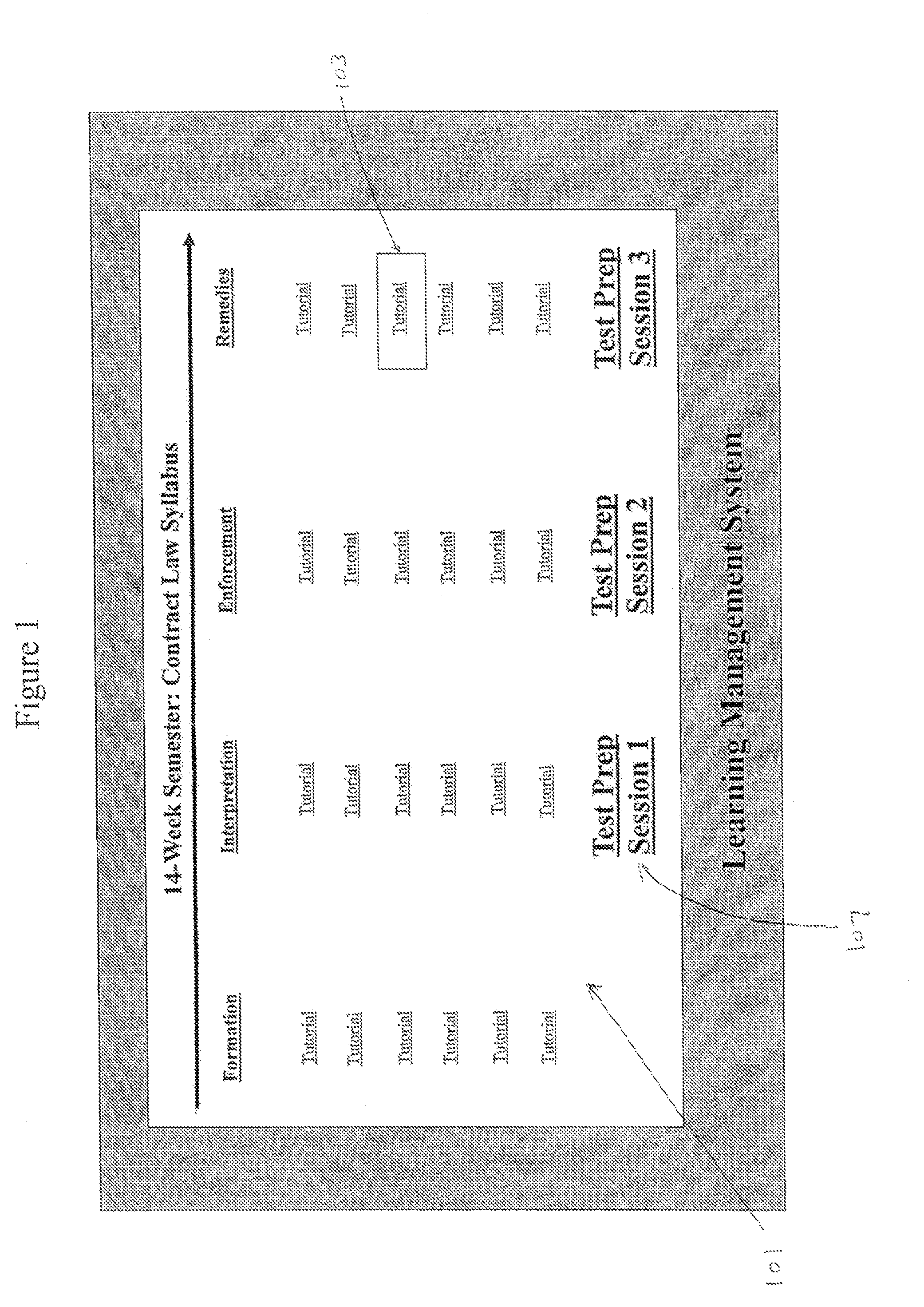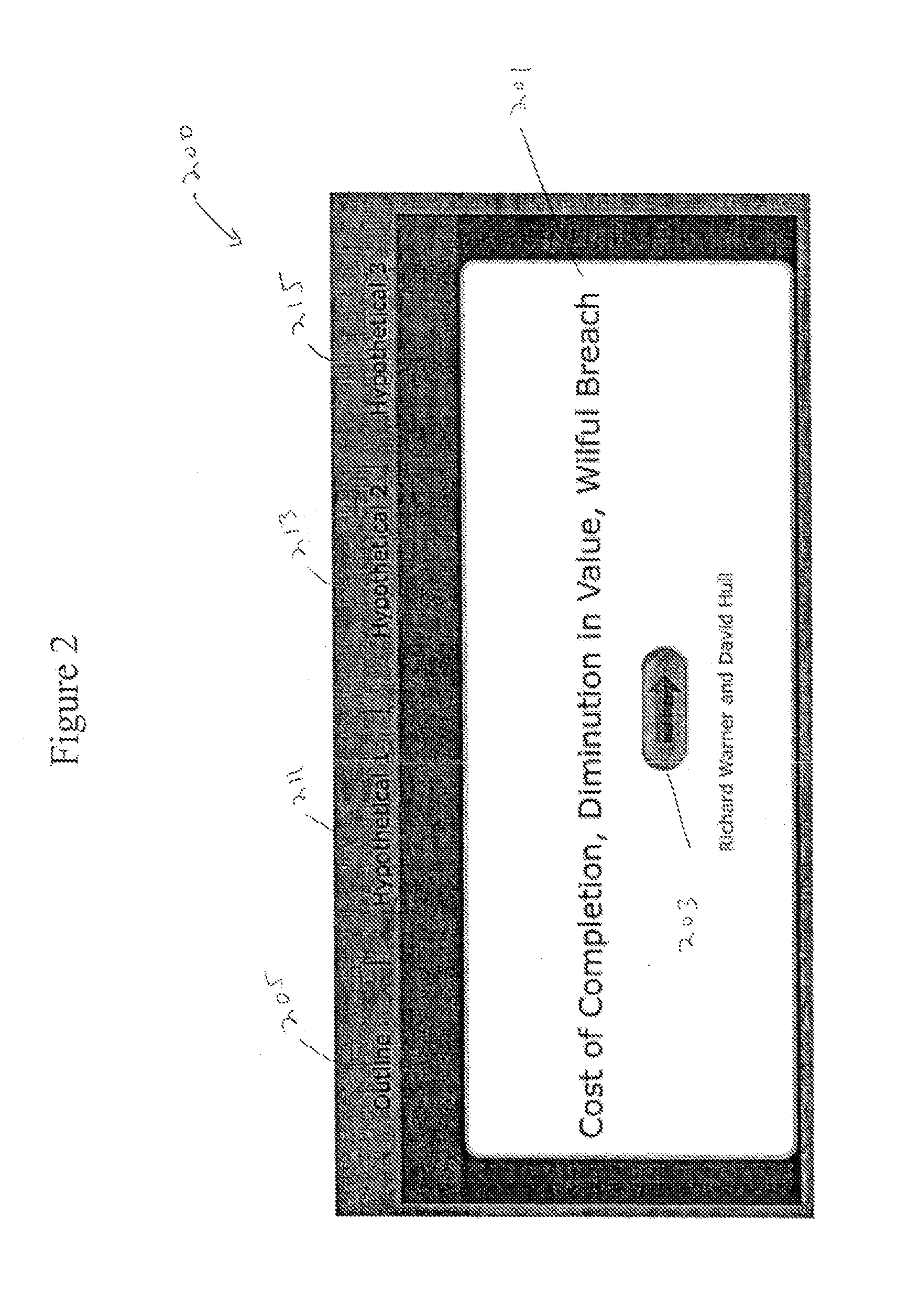Instructional Systems and Methods for Interactive Tutorials and Test-Preparation
a technology of interactive tutorials and instructional systems, applied in the field of education, can solve the problems of students, lack of concreteness of practice, and inability to apply, and achieve the effect of improving interactivity and presentation
- Summary
- Abstract
- Description
- Claims
- Application Information
AI Technical Summary
Benefits of technology
Problems solved by technology
Method used
Image
Examples
Embodiment Construction
)
[0061]Generally, the systems and methods discussed herein will be implemented using a computer, computer network, or other processor running software which implements instruction to the processor to provide displays as necessary to carry out the systems and methods. Software for providing the systems and methods to students may be provided on memory local or remote to a computer used by the student for the learning activity and may be provided to an individual student or may be provided to a number of students (such as entire class) using a computer network such as, but not limited to, the Internet, an internet, an extranet, or an intranet. In alternative embodiments, the instructions may be provided directly in hardware, or may be provided on software running remotely simply providing the student to access the material via a remote interface.
[0062]The Figures provide an overview of an embodiment of a system and method for providing computer assisted learning as it fits into the sc...
PUM
 Login to View More
Login to View More Abstract
Description
Claims
Application Information
 Login to View More
Login to View More - R&D
- Intellectual Property
- Life Sciences
- Materials
- Tech Scout
- Unparalleled Data Quality
- Higher Quality Content
- 60% Fewer Hallucinations
Browse by: Latest US Patents, China's latest patents, Technical Efficacy Thesaurus, Application Domain, Technology Topic, Popular Technical Reports.
© 2025 PatSnap. All rights reserved.Legal|Privacy policy|Modern Slavery Act Transparency Statement|Sitemap|About US| Contact US: help@patsnap.com



